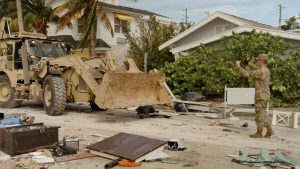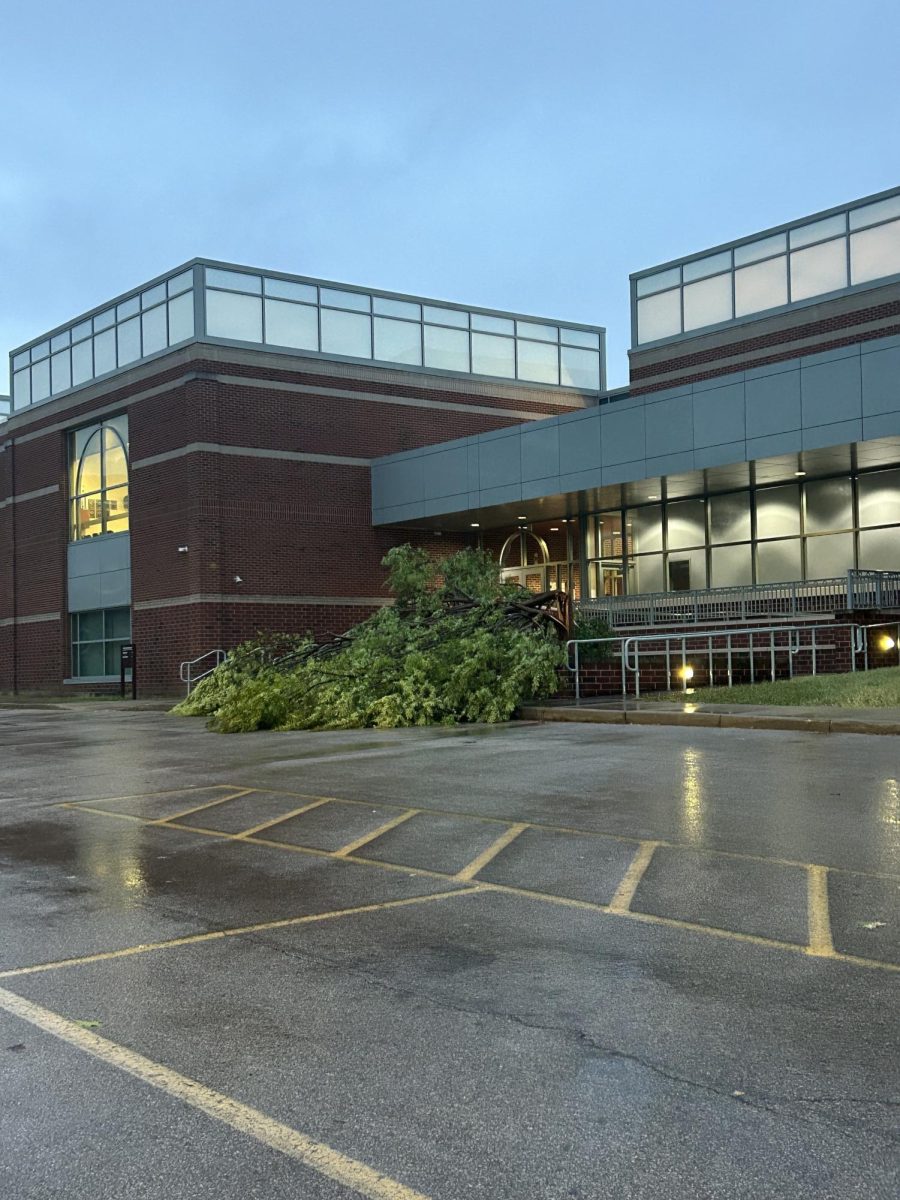Beginning in late September and ending in early October, a sequence of hurricanes ran through the Southeast United States, mainly affecting North Carolina and Florida. With winds up to 140 mph, over 270 deaths and billions of dollars worth of buildings destroyed, recovery will take time.
While Helene was an impressive Category 4 hurricane, Milton outdid that as a Category 5 hurricane. Though the hurricanes’ physical effects were far less extreme in the Cincinnati area, local students still experienced many indirect effects of their destruction.
“My grandma lives in Florida… the whole process was very difficult for her,” Mary North, a student at St. Ursula Academy, said.
Around seven million people were urged to evacuate Florida after Hurricane Helene as Milton rapidly approached. It was troublesome for those with mobility issues, pets or young children to leave their homes on such short notice.
“It’s just kind of difficult for her [North’s grandmother] to evacuate due to her old age,” North said.
Some of the most significant damage was done in western North Carolina, where the surrounding Appalachian Mountains are prone to landslides when there are large amounts of precipitation.
Before a hurricane even gets close to affecting the mainland United States, it takes a long, and often complicated path to develop into a powerful storm that is capable of mass destruction.
“It starts with a disturbance in the atmosphere, often a thunderstorm,” Alexandra Mondini, a meteorology teacher at WHHS, said. “Many of the hurricanes that hit us in the United States start as thunderstorms off the coast of Africa or on the African continent, and then they move over the ocean and hit this really warm ocean water; you get a thunderstorm forming where you have warm humid air rising, fueling the storm.”
The meteorological processes that form the hurricane essentially builds until the development of the hurricane.
“The development of the eye is what makes it the hurricane,” Mondini said. “It starts as a thunderstorm, then it goes to a tropical storm and then at the point where the storm has grown so big you get this center at the common middle of it, called the eye and that’s when we call it a hurricane.”
While hurricanes primarily impact coastal communities, regions further inland can also experience their effects. This was the case when the remnants of Hurricane Helene struck parts of the Ohio Valley after wreaking havoc in the Southeastern United States. Due to the intensity of the rain that accompanied the storm, the WHHS homecoming dance was moved.
Since Ohio is quite far from the coast, hurricanes are extremely uncommon and rarely produce the intense effects that they are notorious for throughout much of the southern and coastal United States. However, hurricanes cannot be completely ruled out as a threat in Ohio, as seen with Helene.
Another notable hurricane to strike Ohio was Hurricane Ike in 2008, which had wind speeds up to 110 mph. There were 195 recorded deaths due to Ike, with seven of those people dying in Ohio. School was canceled for days and power was out for weeks.
WLWT reported that “the storm [Hurricane Ike] caused significant damage across the area, with trees toppling on homes and vehicles and high winds tearing off roofs.”

The Florida National Guard clears debris and prepares critical infrastructure ahead of Hurricane Milton’s landfall. (U.S. Army photo by 1st Lt. Brandon Miles) (107th Mobile Public Affairs Deta)
Hurricanes such as Helene and Milton typically form over warm ocean waters and can last anywhere from a few days to over a week, depending on environmental conditions. Once they make landfall or encounter cooler waters, their intensity usually diminishes significantly, often dissipating in a few days.
“The typical lifespan just depends on where the hurricane winds up and whether it’s over land, whether it’s over water, and what the temperature is,” Mondini said.
To supply proper care for those affected by Helene and Milton, the WHHS Red Cross Club has organized a fundraiser, hoping to raise up to $5000.
The Red Cross website states that “Tens of thousands of people have already taken refuge in shelters, and we [The Red Cross] have distributed meals, water and relief supplies in some of the hardest-hit areas.”
Hurricanes not only pose threats to human life and infrastructure but also have profound impacts on coastal ecosystems, particularly coral reefs and mangroves. These storms can cause physical damage through strong winds and storm surges, disrupting the delicate balance of these habitats. Understanding the effects of hurricanes on these vital ecosystems is crucial for developing effective conservation and human recovery strategies.
“We focus on damage on land because that’s what we see, like how it is affecting houses, people, streets, and we see all the devastation on land. But if you are an animal that lives in a coral reef, that storm surge, which is a huge wave produced by the winds moving over the water, can rip up a reef,” Mondini said. “Mangroves grow on shorelines and they’re actually a really good buffer between land and sea so sometimes mangrove forests can absorb the brunt of the hurricane and act as a little bit of a shield before they hit our populated areas, which is why protecting them is so important.”
Beyond environmental damage, hurricanes significantly affect public health by increasing the risk of waterborne diseases and general health issues. Flooding and infrastructure damage can compromise clean water access, leading to outbreaks of a multitude of illnesses.
“You might’ve survived the hurricane but if you don’t have water or shelter, you’re not going to make it very long,” Mondini said.



